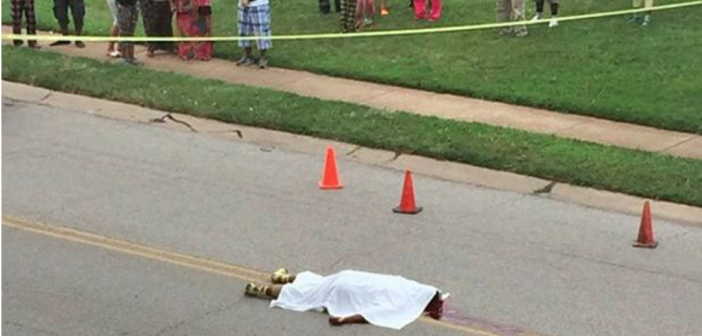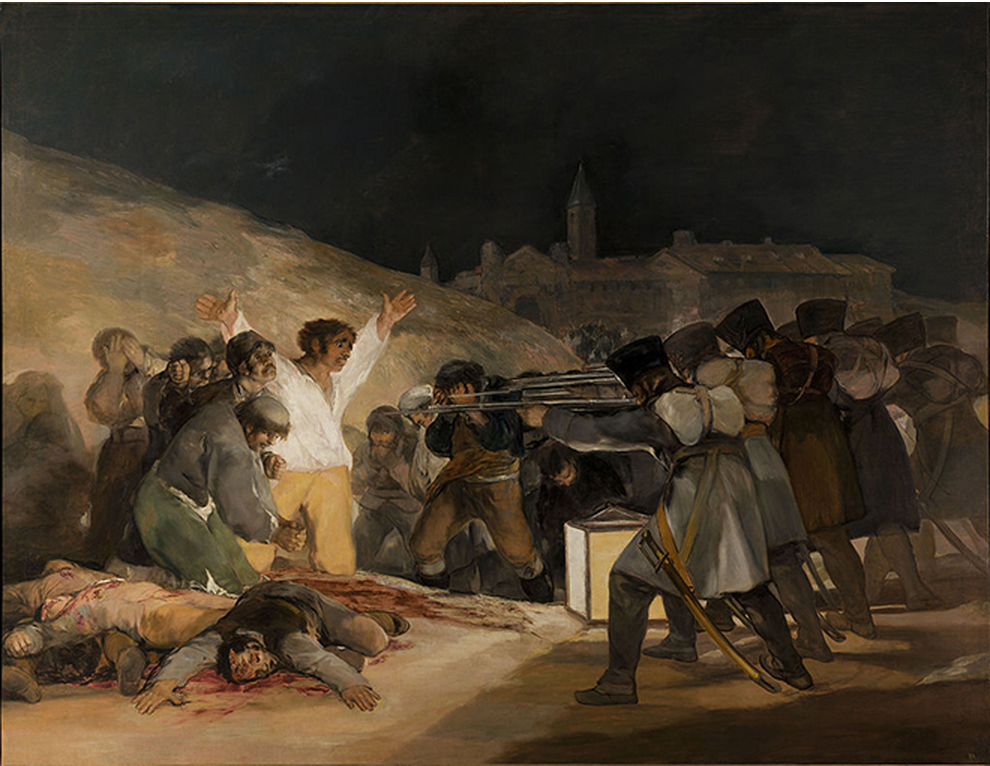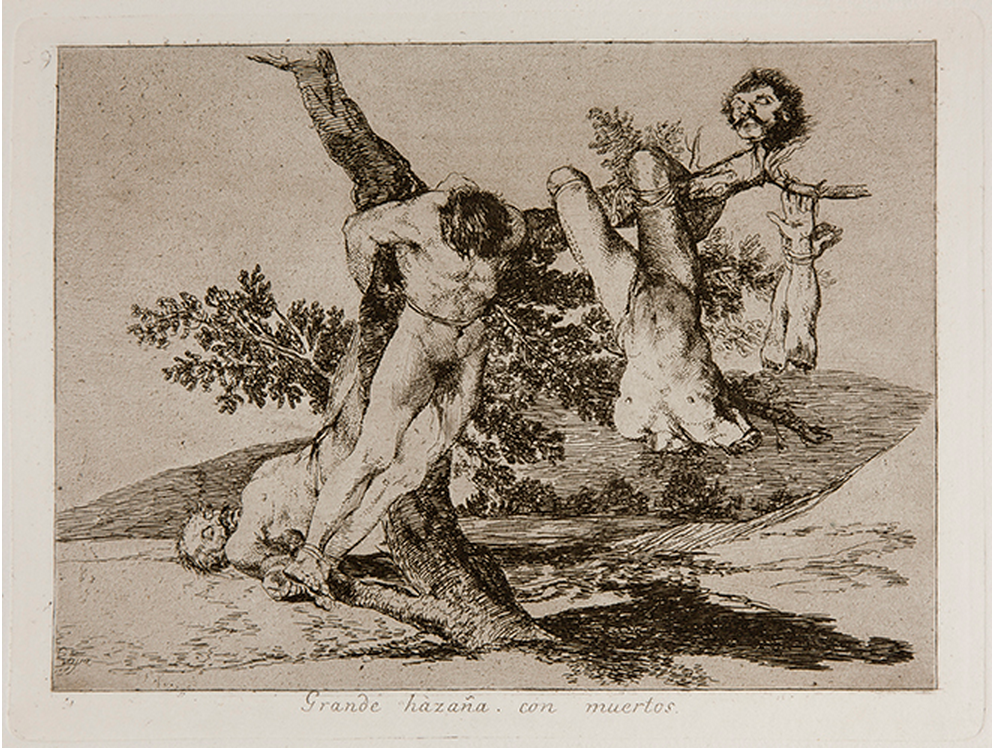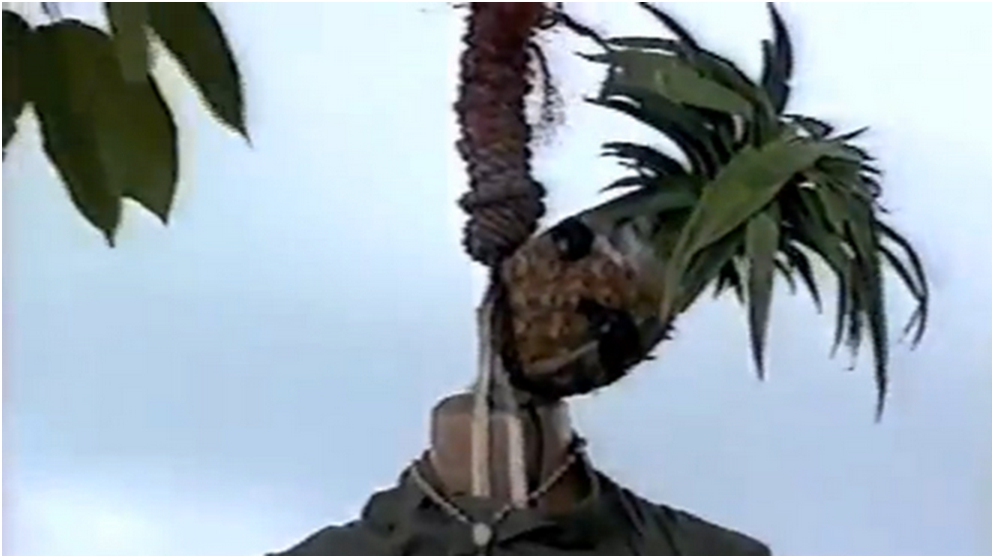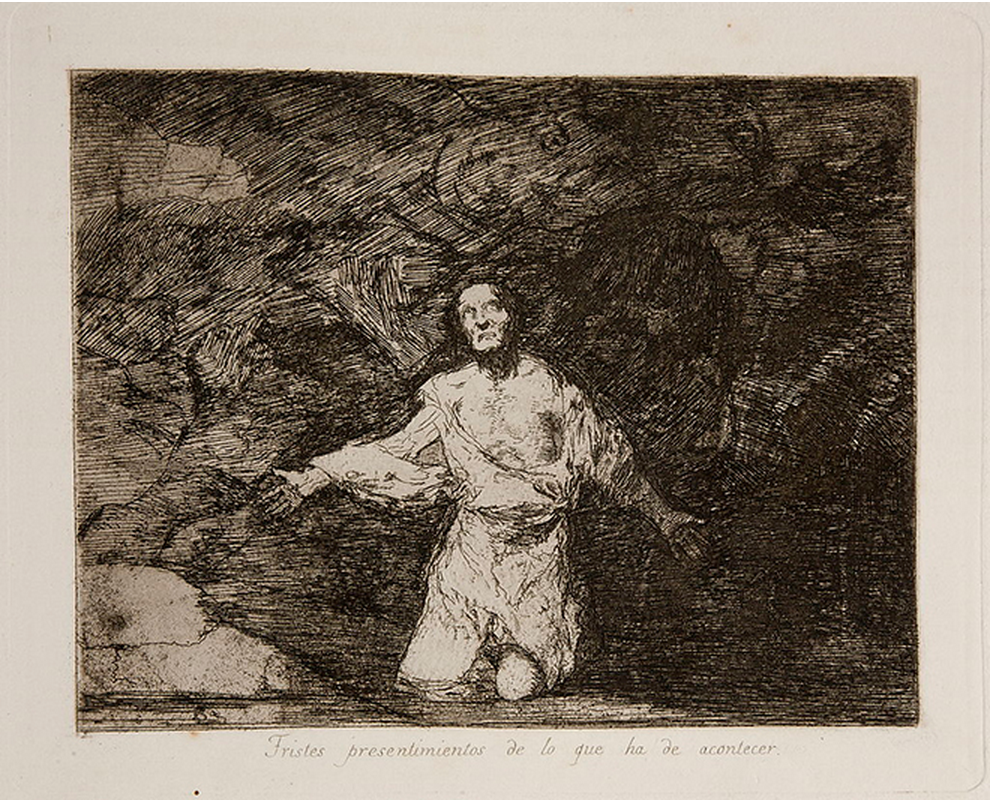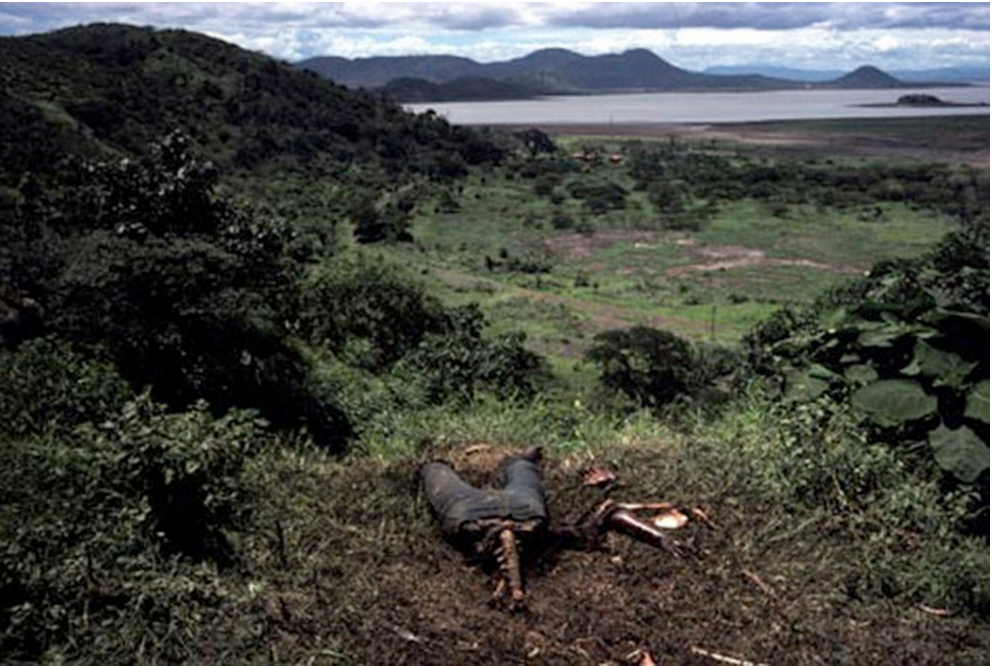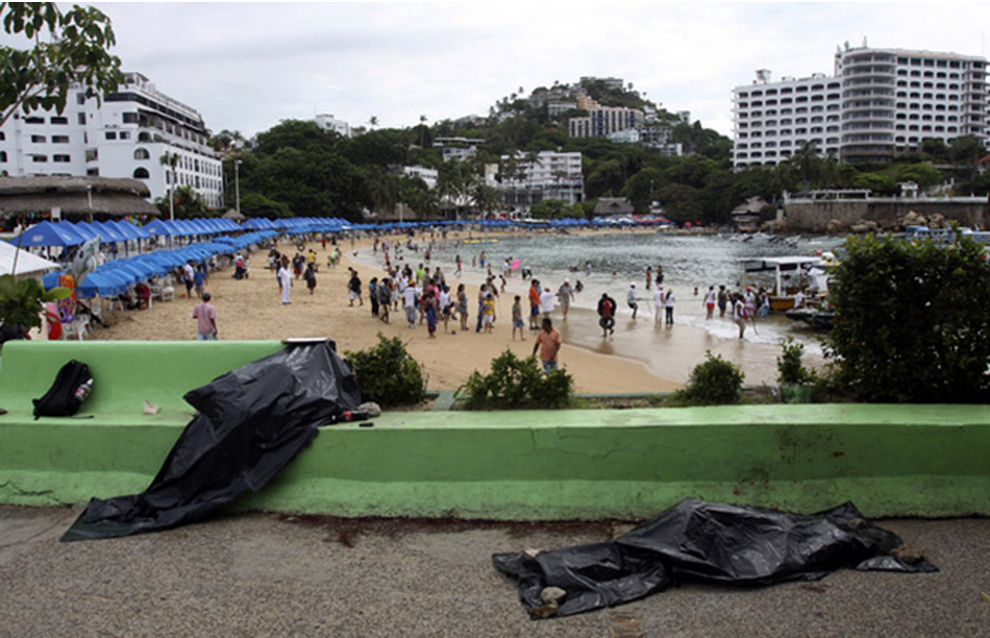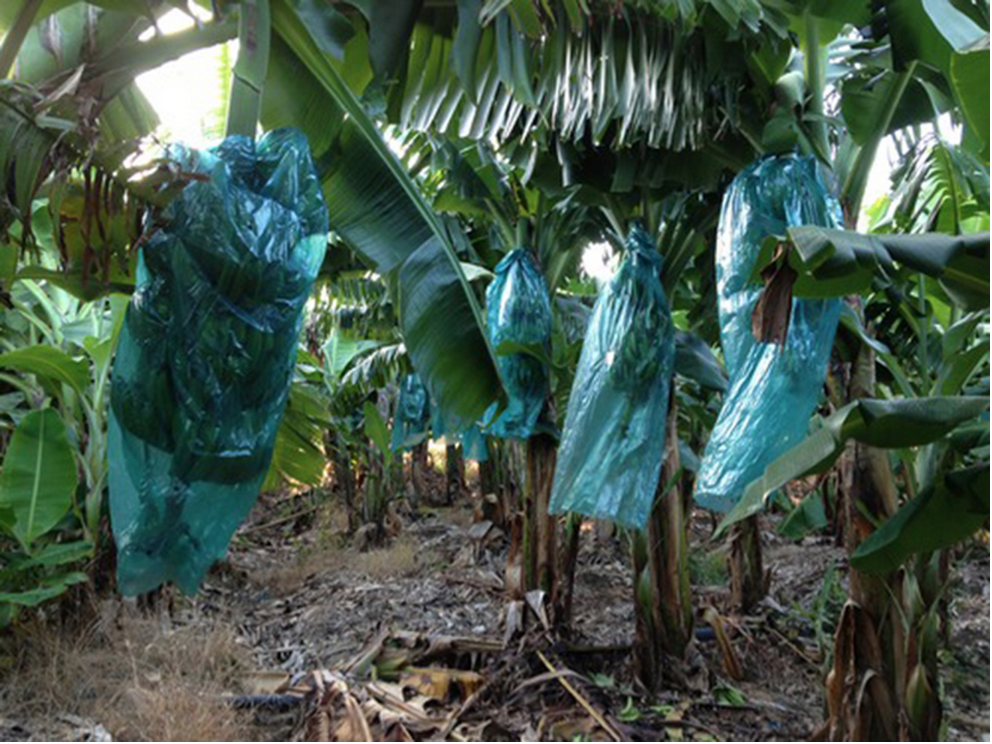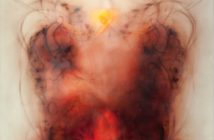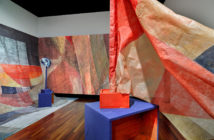"Information is never innocent. Its toxicity depends on who is consuming—and who is consumed." from "Material Witness" by David Joselit, Artforum, February 2015
During the October 14th episode of his radio program On Point, Tom Ashbrook, in conversation with Stephanie Stepanek, co-curator of the Museum of Fine Arts' exhibition Goya: Order and Disorder, attempted to correlate the gesture of Goya's infamous about-to-be-executed figure from El tres de mayo de 1808 en Madrid (The Third of May 1808) with the current Hands up! protests. The slogan is now being used throughout the world by activists responding to an alarming and increasing number of incidents of police brutality against Black people in the wake of cases in Florida, Ferguson, Staten Island and beyond.
As one online commentator noted, Ashbrook's illuminating remark is "dismissed without comment" and what might be worse, Stepanek adds that the well-known Third of May painting must be considered alongside its complement piece, created in tandem. While discussing El 2 de mayo de 1808 en Madrid (The Second of May), which depicts the previous day’s rebellion by the Spanish against the occupying French forces, precipitating the execution depicted in the former painting, Stepanek remarks that "they [the Spanish]have behaved with equal brutality just the day before . . . it's very hard to sort out."
Whether this amounts to a thinly disguised admonishment of the supposed criminality of Black communities in justified protest, Goya’s unique refusal—towards the end of his life—of the pictorially melodramatic and the relevance of his methodology to a contemporary understanding of the inadequacy of images as documents, continue to resonate, and are presently reaching a burgeoning audience.
At a recent public panel on the state of the arts in Boston at the central public library, educator and visual artist Steve Locke contributed to the analysis provoked by Ashbrook, offering that [and here I paraphrase]: the youth, especially the Black/Brown youth of this city, would understand perfectly the horrors of war depicted by Goya—the question of their participation in the viewing of the exhibition has nothing to do with comprehension of art history and everything to do with lack of access and a hesitation to frequent institutions, which have for years cultivated an air of elitism towards and often participated in the violent rupturing/restructuring of low-income neighborhoods.
The Museum of Fine Arts’ Goya exhibition—which coincidentally closed on Monday, January 19th, Martin Luther King Jr. Day—featured several examples of the artist’s pension for rendering hideously gnarled tree trunks, both as the material support for the presentation of wartime atrocities and as looming, menacing structures, which pantomime human cruelty and pretend authority (as in Lo que puede un sastre! from the Caprichos series).
The tree in Grande hazaña con muertos from The Disasters of War, one of Goya’s most gruesome and iconic pieces, represents the very site of violence—the location which enables the mutilation of bodies to take place and remain there as warnings. This, of course, is familiar to North American audiences, well acquainted with our bitterest of local produce, the strange fruit of Southern trees (and bridges, and light posts, etc).
It is important to point out here what Koritha Mitchell in Living with Lynching will not let us forget—that brutal acts of racially-motivated violence were not antithetical to modernity, in fact they prospered together. While in Goya’s time we can see this exemplified in the escalating horrors of the Franco-Spanish War amidst technological revolutions in steam-driven engines and electrical lighting in post-Enlightenment Europe, Mitchell situates the violence of Black lynching against the supposedly modern and triumphant backdrop of a post-world war, pre-financial depression United States complete with railways, telephone systems, and the picture camera.
Mitchell goes on to argue that the mechanical apparatus, the camera, and its product, the photograph, occupied a position of extreme long-term importance for lynch mob attendees. In a horrific parody of the Catholic Church’s early frenzy with saintly relics, the mob often wanted to take something home with them after the spectacle of torture and death. And since pieces of the victim’s body were unavoidably "in short supply" and in questionable states, the souvenir photograph took their place. Goya’s prints, in contrast, were not published until after his death, reaping no material gain from those atrocities.
Photography, as such, was inseparable to the event of lynching itself—fundamentally complicit; "the photographs didn’t simply document violence, they very much performed it."<a href="#foot2B" name="foot2" onclick="scrollReset();"><sup>2</sup></a>
In reality, lynchings contained a highly constructed and coded visual language expressed around a Freudian suppression of libidinal responses to mob violence. The pristine white sheets often shown wrapped around the mid-section of male lynching victims, as well as the modesty of the work dress accorded female victims, denote for Mitchell, a conscious effort on behalf of the mob to put forward an image of their ritual of violence as an ordered and decent affair. What these shrouds occult (and simultaneously reveal) are the actual savageries of pre-lynching torture, in the form of male castration and female sexual violation.
Indeed, public lynchings were treated as live theatrical productions, with show times and locations printed in local newspapers, and the appearance of familiar, predictable characters: "black rapists" and "white avengers". Souvenir photos were made into postcards and shipped around the country—the original "wish you were here".
Modernity and technological advancement thus catapulted the image of racist mob violence, the mutilated Black body, those ever-silent, low-hanging, strange fruits—unripe repositories of projected fears and ignorance—into the hands and hearts and homes and minds of countless North Americans who either lived in worried anticipation for the false accusation that would see them at the end of a rope, or bemoaned the lack of such spirited entertainment in their own town.
While the racist mob and those invested in its future employed virtually every available narrative trapping in order to convince lynching spectators (either in person or via its dissemination) of the truth, and justness of their dutiful performance—staging, costuming, composition, elation—Goya denies the viewer the ability to read his graphic imagery as allegorical, heroic or partisan. Actually, Goya has removed nearly all of the melodramatic devices in this composition [Grande hazaña con muertos] and left us with only the tree and its extra limbs to contemplate. The tree’s own outstretched appendages, bare and burdened, resembling the condemned from The Third of May, seem to be questioning the totality of this scene, beguiled by its lack of clues, explanation or purpose. Hands thrown up in a universal "Why?"
And although I am drawing primarily from two works out of almost two hundred on display in order to illustrate my point, it should be noted that many prints throughout Goya’s "Disasters of War" series embody this counter-Baroque sentiment of a de-stabilizing or non-existent narrative to accompany horrific scenes, thus enhancing object-viewer identification.
Goya’s documentary-style illustration is so ghastly we can scarcely imagine someone coming upon the scene in real life. In this regard, Goya’s work can be seen as an antecedent to contemporary photographer Susan Meiselas and her brutal project chronicling a war-ravaged Nicaragua. As with Meiselas’ infamous Cuesta del plomo… the absence of a visible living witness to the scene presented by Goya serves to cast the image as increasingly unfathomable. It is precisely this psychological distance coupled with an almost cinematic proximity, a zoom quality, which will ensure repeated consideration and reflection, as the author does not appear to provide any correct lens or moral framework with which to approach this imagery. We are left baffled, though moved to uncover the nature of this tortured landscape. What human errors could have led to such visceral consequences… and who are complicit in engendering its conditions?
The totalizing primacy of the documented narrative contained in the lynching photograph functions in precisely the opposite way, as its engineers surely intended—the audience is presented with all of the answers in a neat little package. The immediacy and supposed impartiality of the camera is exploited in order to discourage counter-narratives that would seek to disempower the anti-black mob.
When we elevate the image above other representations of this history, "we reaffirm the authority of the mob"<a href="#foot3B" name="foot3" onclick="scrollReset();"><sup>3</sup></a>, which achieved its immediate and long-term goals through the reproducibility of the photograph and the myth of its objectivity. Other narratives were there, though largely subsumed by the captivating power of the well-tailored image. Black-authored lynching dramas emerged as a response to the celebrated phenomena of lynching, though in these cases the emphasis was most often placed on the lynching victim’s surviving family—dealing with loss and highlighting the communal devastation wrought by one of these White spectacles.
In this sense the Black lynching drama genre can be seen as telling the story of racist mob violence from the point of view of the wound, a collective affectivity. If we stretch the metaphor backwards toward Goya, one can say that Goya often told his stories from the point of view of the wounded, the anonymous or symbolic affected. For the image in question [again, Grande hazaña con muertos], there is, arguably, no story in the traditional sense. The viewer is confronted with a representation of the massive, collective wound that is war, the "dismemberment of Spain" as Goya perceived it, in a supremely de-melodramatized form, without recourse toward vindication or heroic justification.
A close reading of Goya, attuned to the subtle transformations of institutionalized Black oppression in the United States, can thus provide the viewer with a clear understanding of the danger of the narrativized image. Goya teaches us that a combined storytelling technique of moral distance, cinematic proximity and dramatic ambiguity is more likely to motivate a viewer towards genuine recognition of and identification with the wounded.
A further reading of Goya, channeling Koritha Mitchell’s analysis of lynching photography and the recent violent death of Eric Garner, remind us that the raw, documentary image is not always a universal appeal to truth and reason. For those in our society whom the state is designed to oppress, an image of wrongdoing can be easily ignored or framed in such a way that it does actual harm to the victim, and not to their persecutor.
We should, then, as a consumptive society, reconsider our relationship to images and their presentation—becoming unwaveringly critical of their veracity and anticipating their eventual uselessness—embracing those complex narratives that demand an attentive listener and require a commitment to experiencing a prolonged level of empathetic discomfort.
We must come to acknowledge the wound within which many of us unconsciously live and toil.

